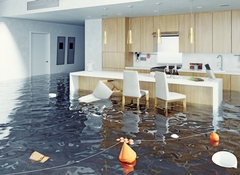
Water damage can be one of the most devastating occurrences a homeowner or business owner can face. From a minor leak to a natural disaster, the impact on your residence or commercial property can be significant. As challenging as experiencing water damage may be, understanding the restoration process can provide you with reassurance and a clear path forward. Today, we'll take a deep dive into the process behind water damage restoration.
Understanding the Impact of Water Damage
Before examining the stages of water damage restoration, it's crucial to gauge the severity of the situation. Water damage can cause complex and-lasting complications, such as structural instability, electrical issues, mold growth, and even health hazards. That's why it's of utmost importance to contact professionals like Dri Pro Restoration at the earliest signs of water damage. Their trained experts are equipped with the most modern techniques and equipment to restore your property to its original state.
Step 1: Inspection and Damage Assessment
The first step in the water damage restoration process is a thorough inspection of the property and damage assessment. The restoration experts will identify the type of water damage, its source, and the extent of the property's damage. This step is vital to create a tailored plan of action for the restoration process - one that would yield the most efficient and cost-effective results.
Step 2: Water Extraction
Once the initial assessment is complete, any standing water needs to be removed as quickly as possible to prevent further damage. Modern water extraction equipment and strong pumps, like those utilized by Dri Pro Restoration, ensure swift removal of the water, minimizing any prolonged contact with your property's structure.
Step 3: Drying and Dehumidification
Once the water has been extracted, the drying process can begin. Even after visible water removal, moisture likely remains in the building materials. This moisture can cause serious secondary damage if not adequately addressed. By using specialized equipment, restoration professionals can accurately measure the moisture levels and use dehumidifiers to dry and restore the property effectively.
Step 4: Cleaning and Sanitizing
Post the drying process, cleaning and sanitizing the property is a must to avoid health risks. Water damage can encourage mold growth, and lead to unpleasant odors. Specialists help conduct antimicrobial treatments, dispose of damaged materials, and use advanced cleaning techniques for a thorough cleanup.
Step 5: Restoration & Final Inspection
The final step involves restoration—this can range from minor repairs like replacing a few drywall panels to major reconstructions like rebuilding entire rooms. Once the restoration process concludes, a final inspection is conducted to ensure everything has returned to its normal condition, ensuring the safety and comfort of the occupants.
Conclusion
Water damage can be truly devastating, but knowing that there is a systematic process in place can provide solace to those navigating through it. Through swift action and the careful execution of each step in the water damage restoration process, companies like Dri Pro Restoration provide an invaluable service in helping families and businesses recover from such events.
Dri Pro Restoration is a leading restoration company with a commitment to provide quick and efficient water damage restoration services. Their team of restoration experts brings years of experience, advanced techniques and equipment to ensure the job is done right. As stated on their website, "Your Emergency is our Urgency."
Remember, the sooner you reach out to a professional restoration team, the better your chances of mitigating the water damage impact on your property. So, if water damage catches you off-guard, don't hesitate to get in touch with a reliable partner like Dri Pro Restoration.